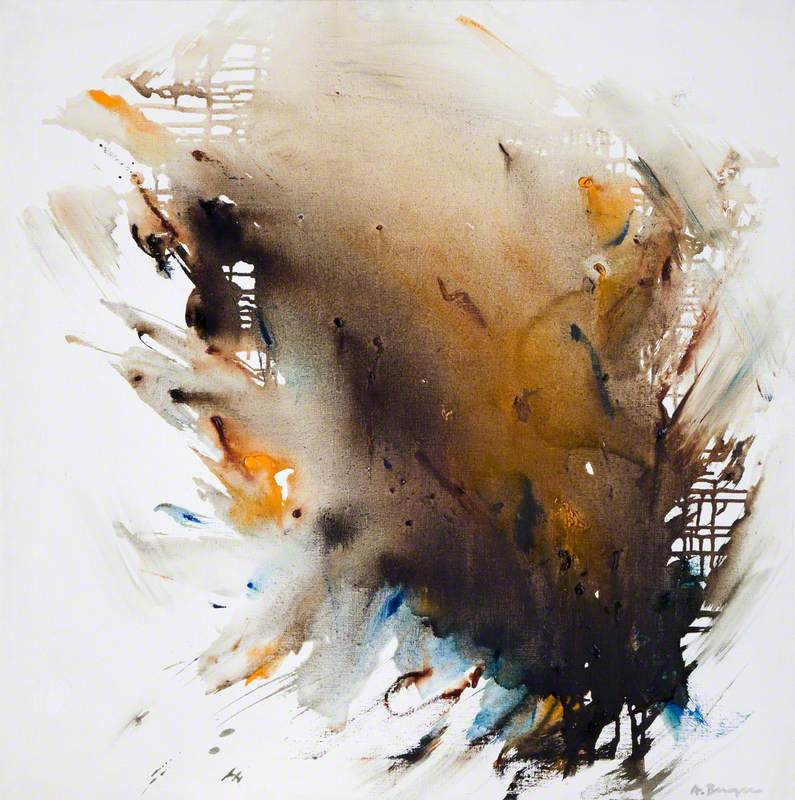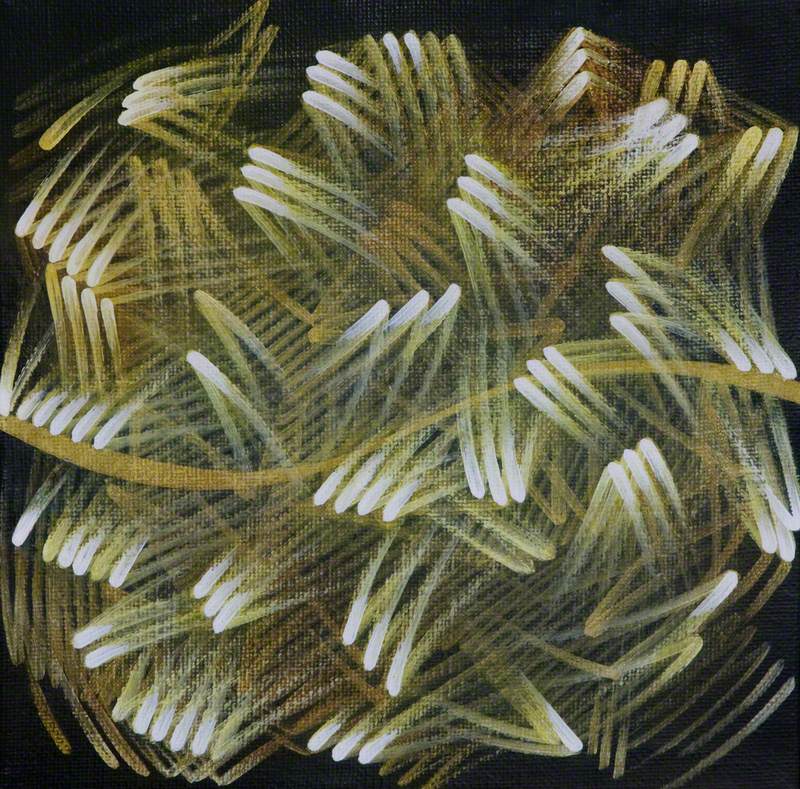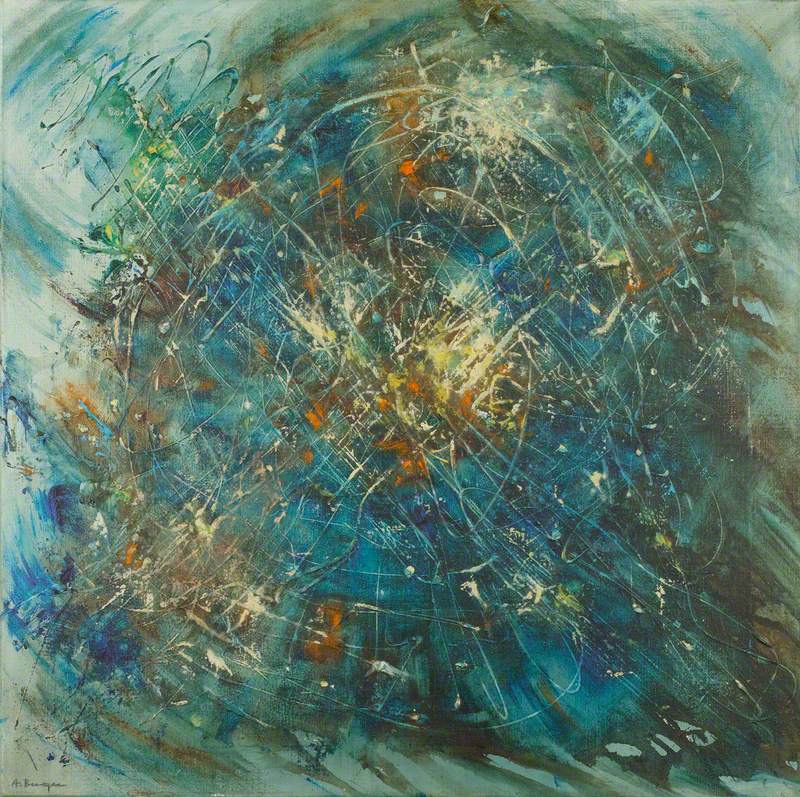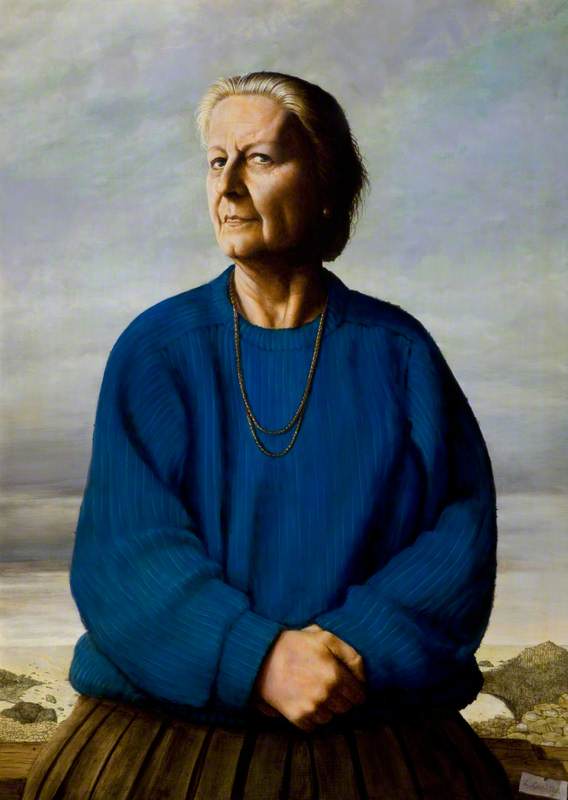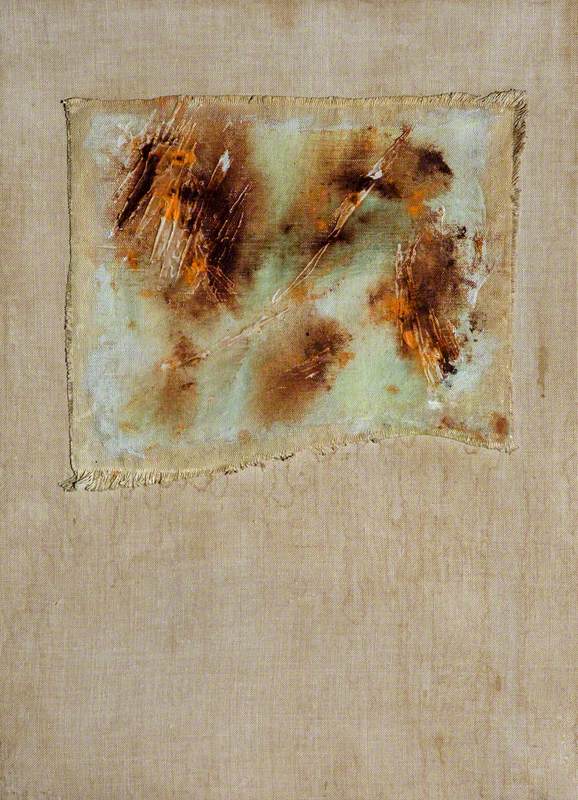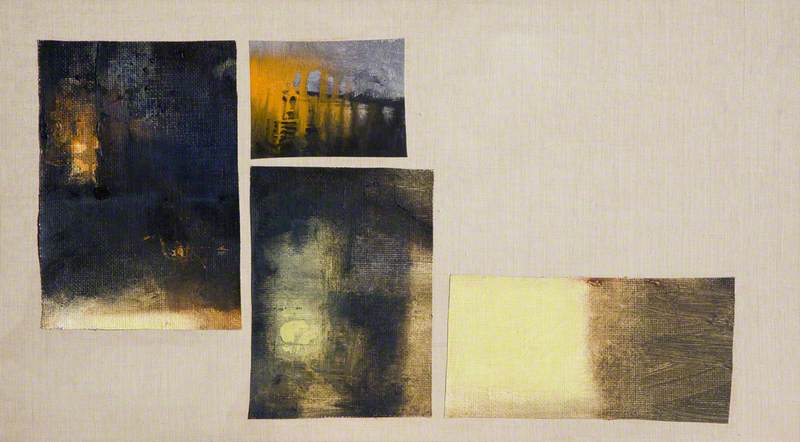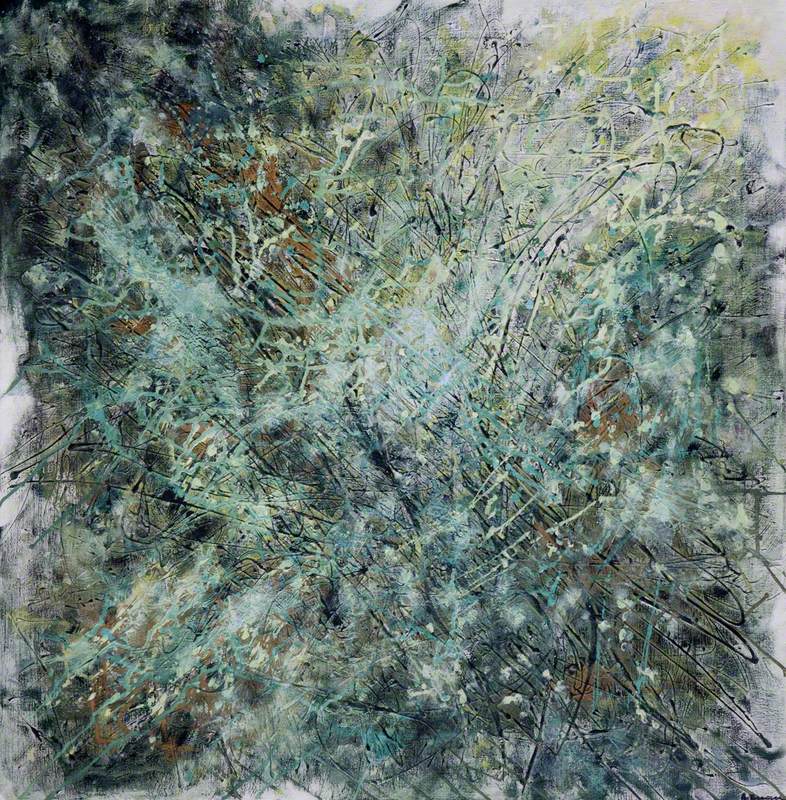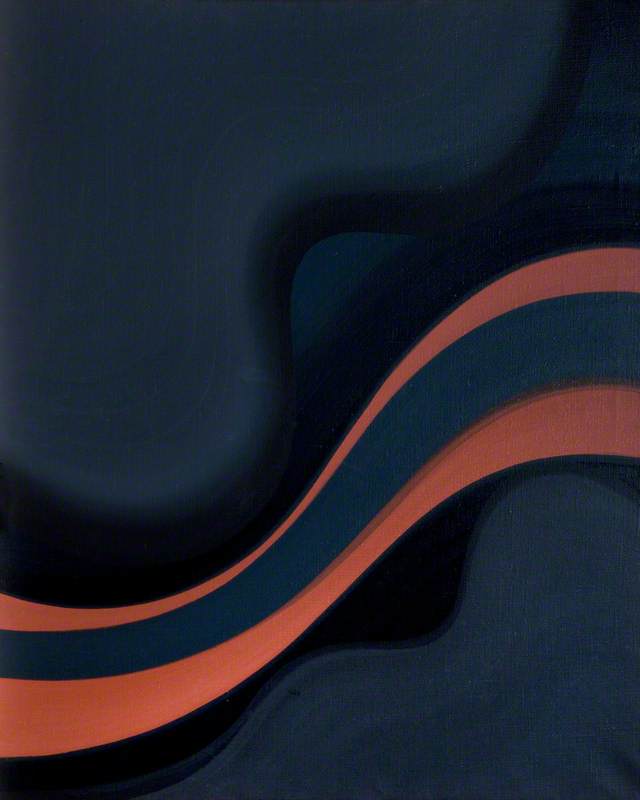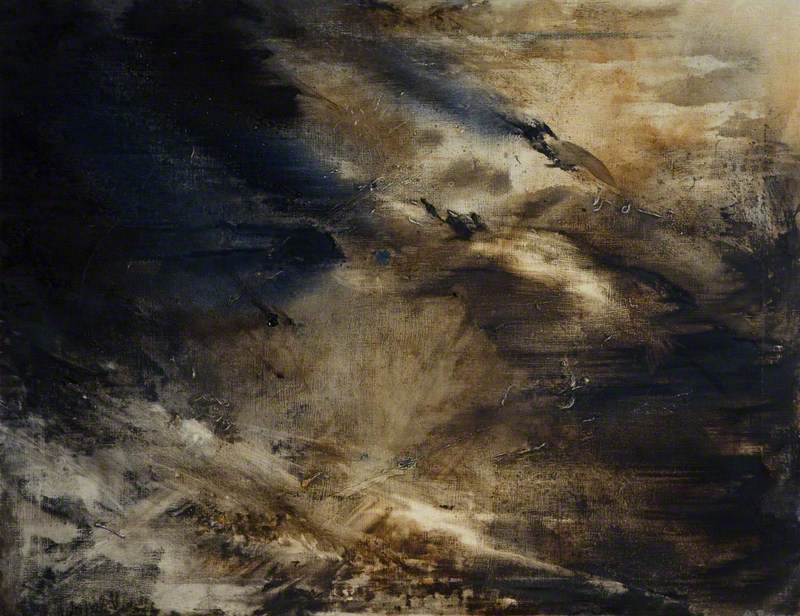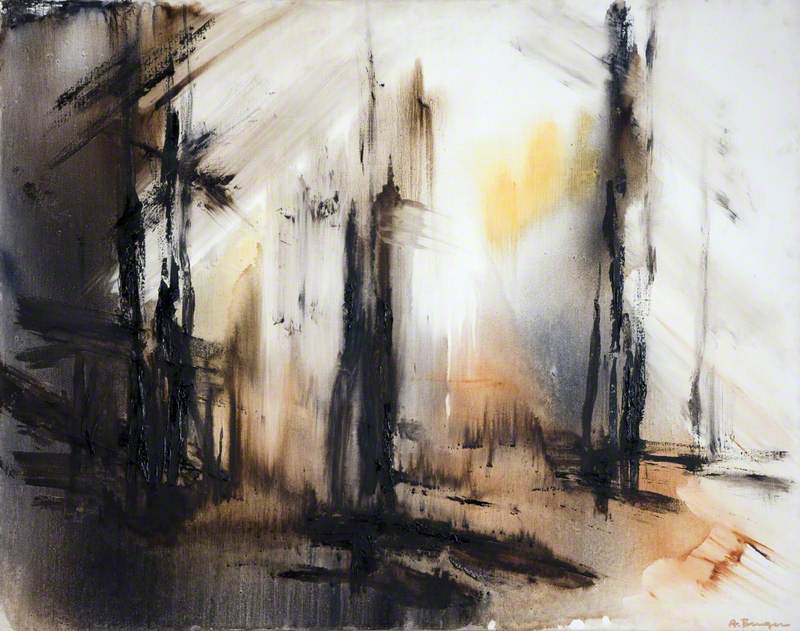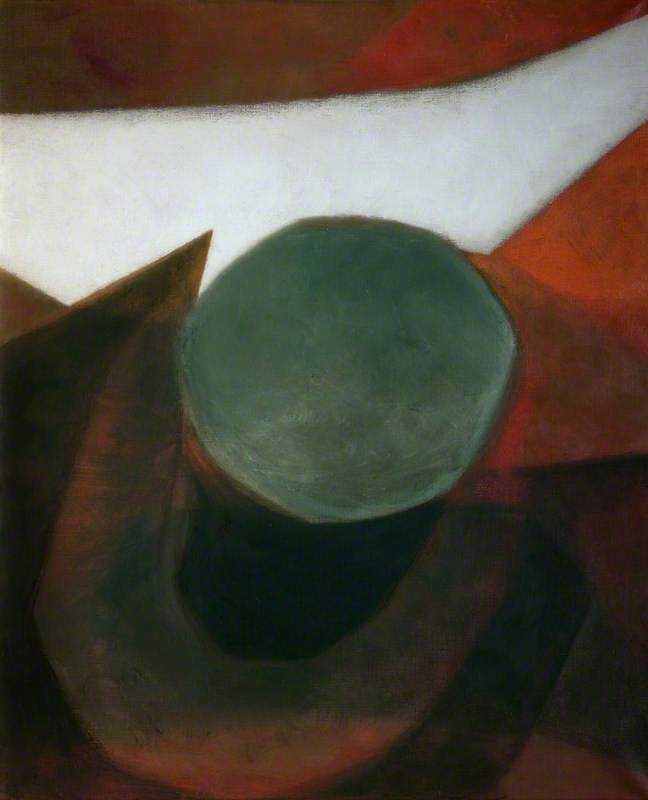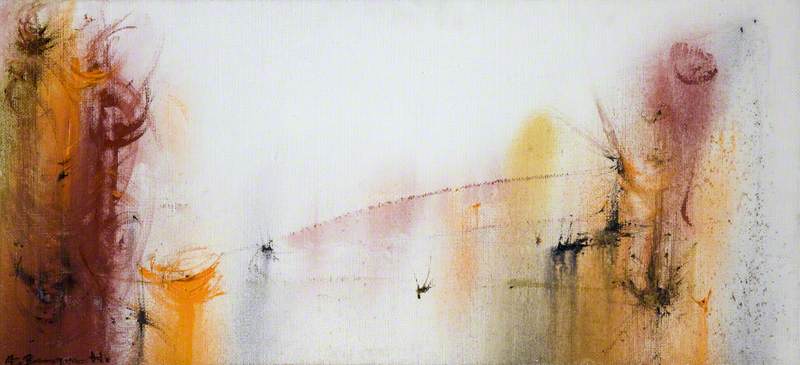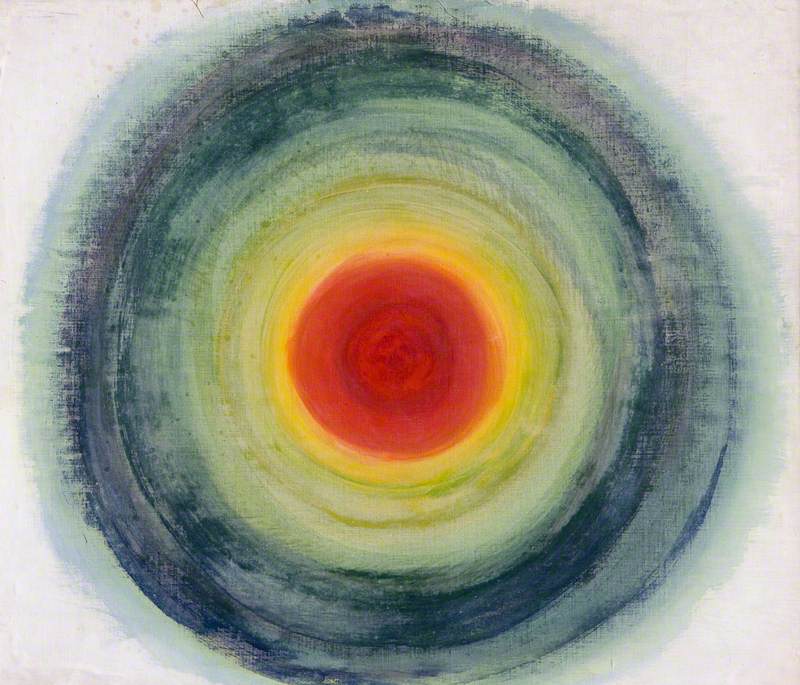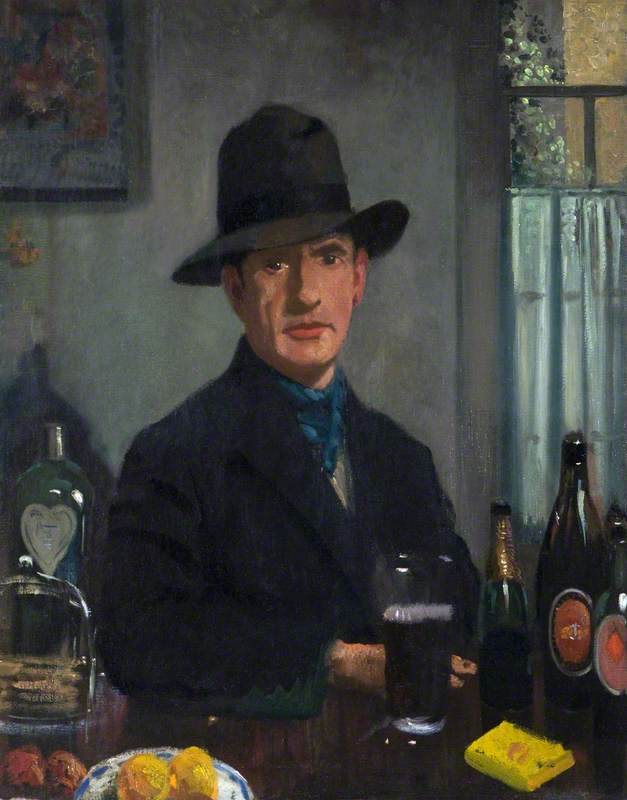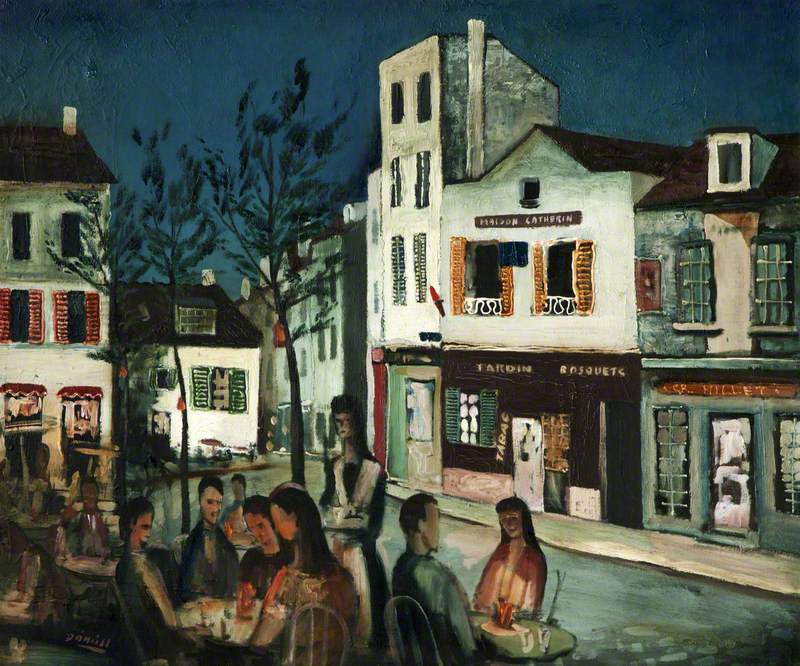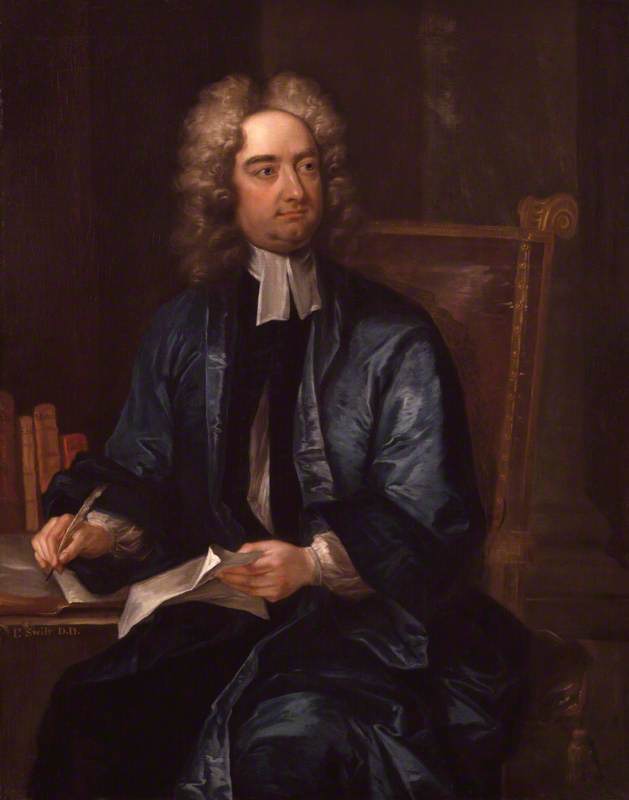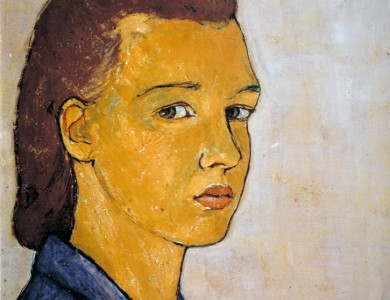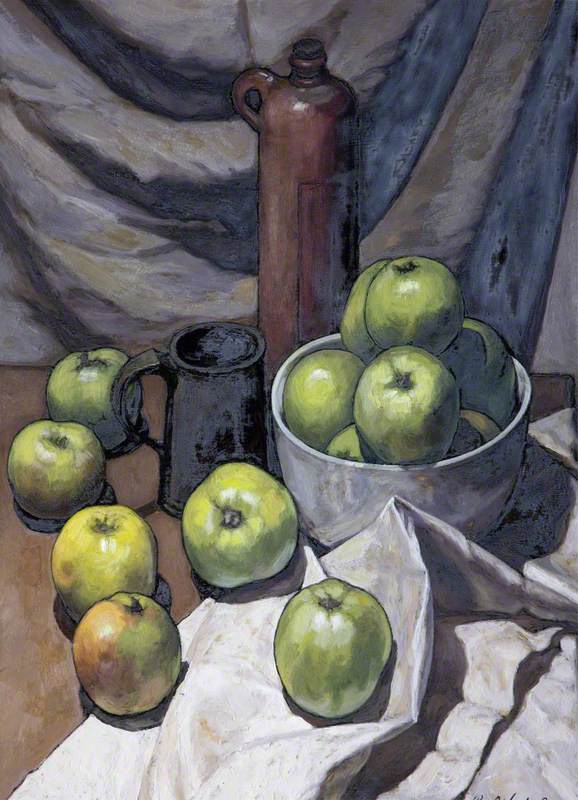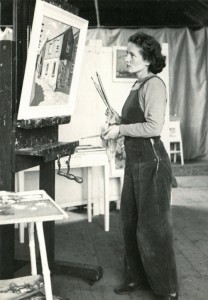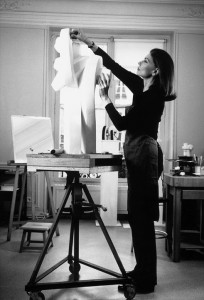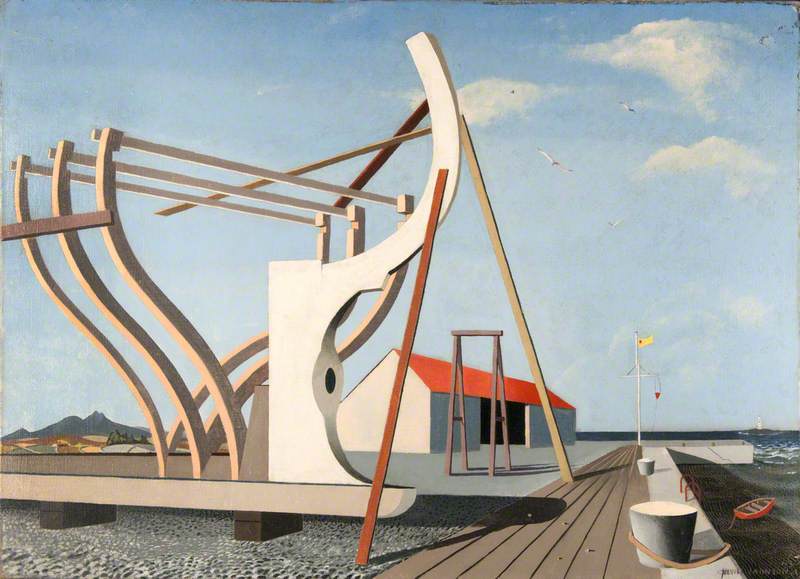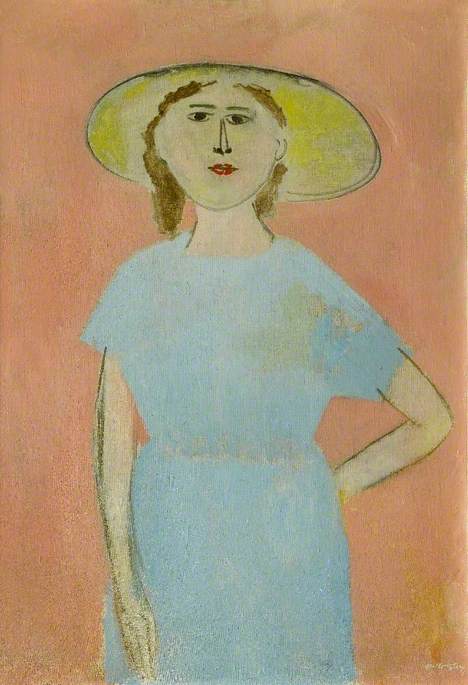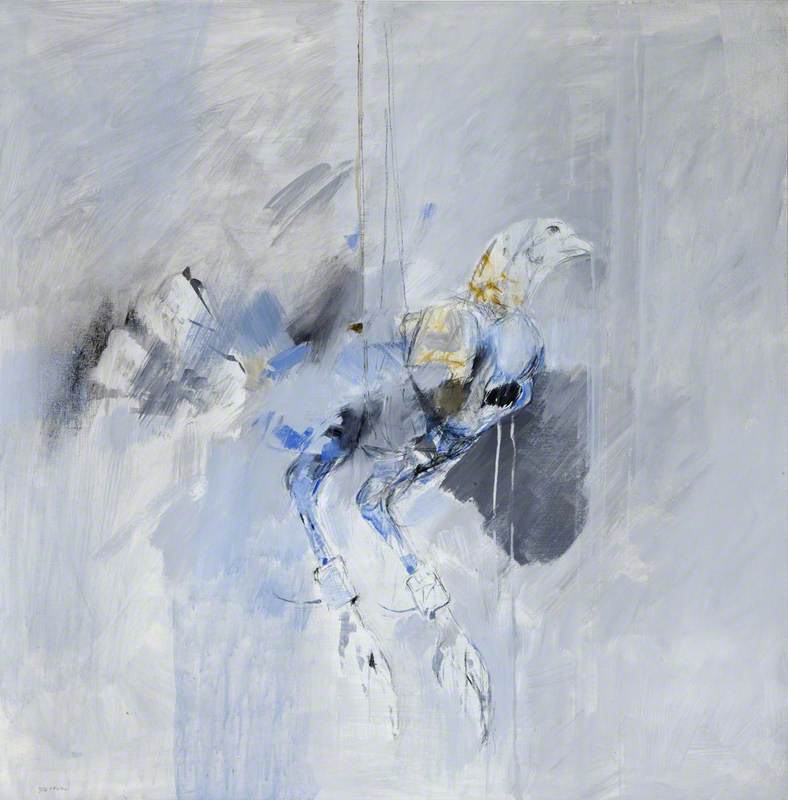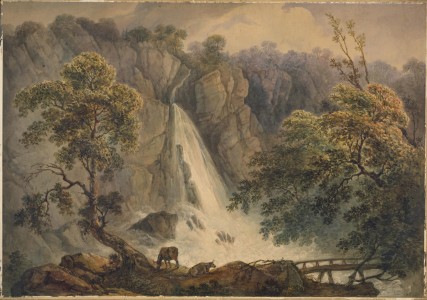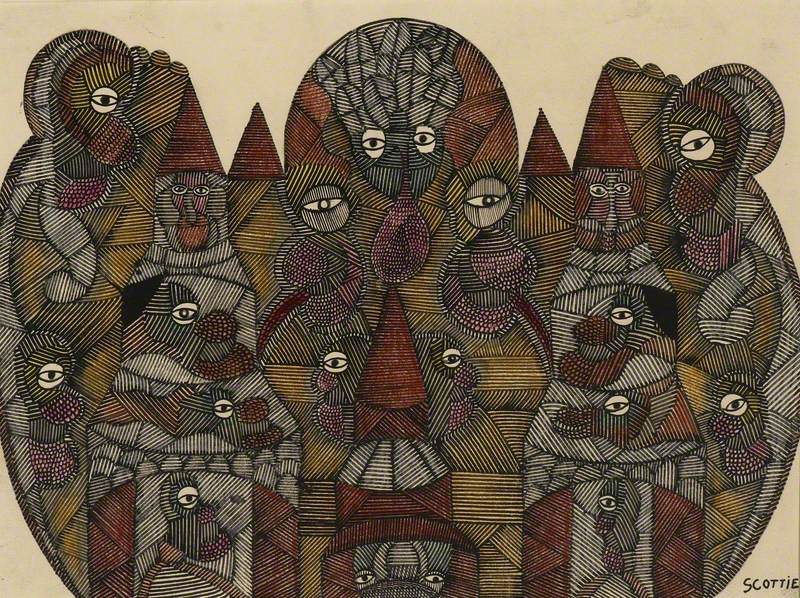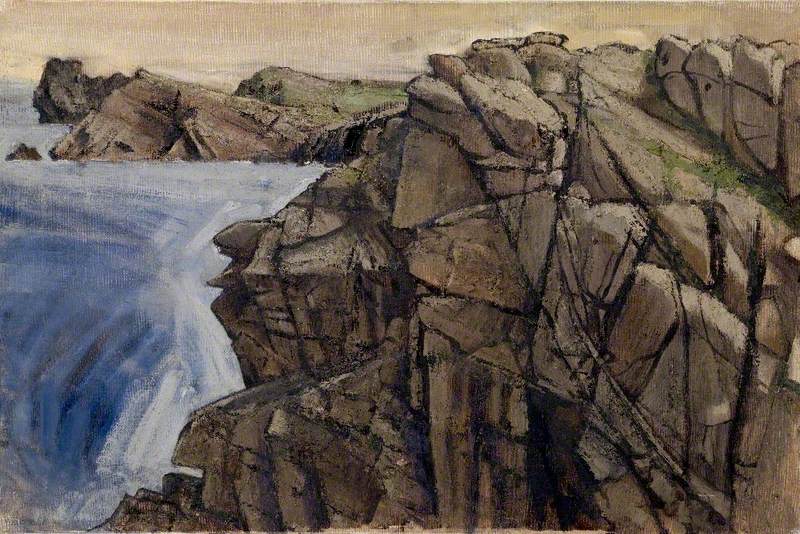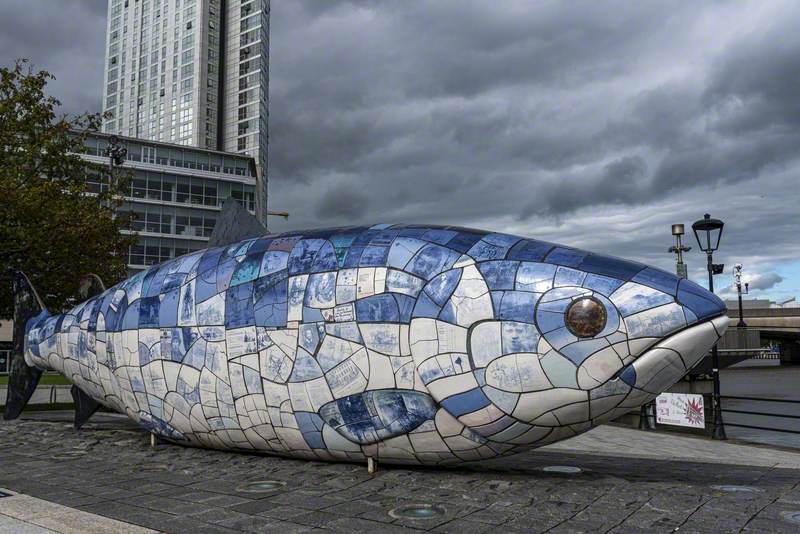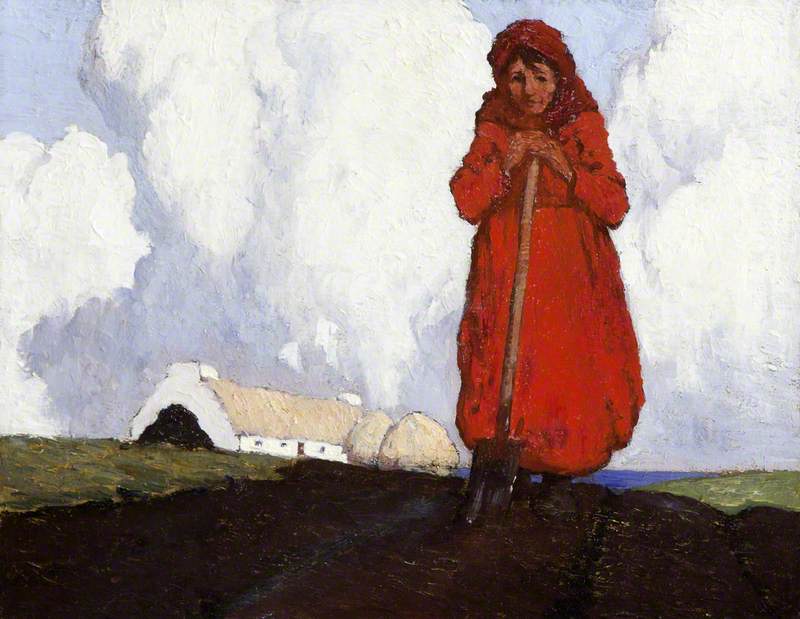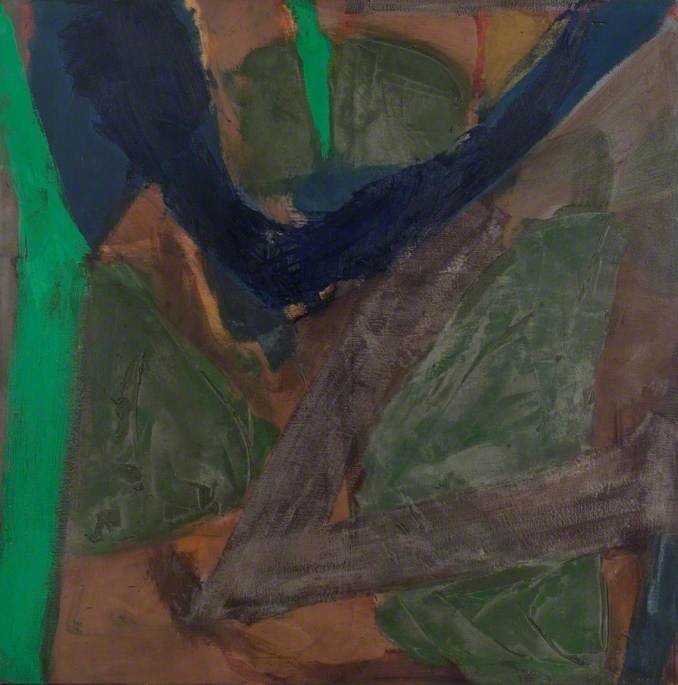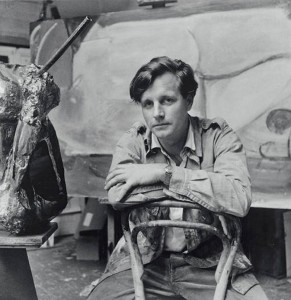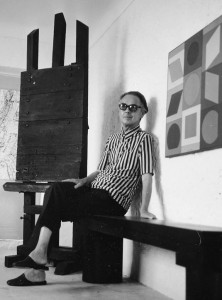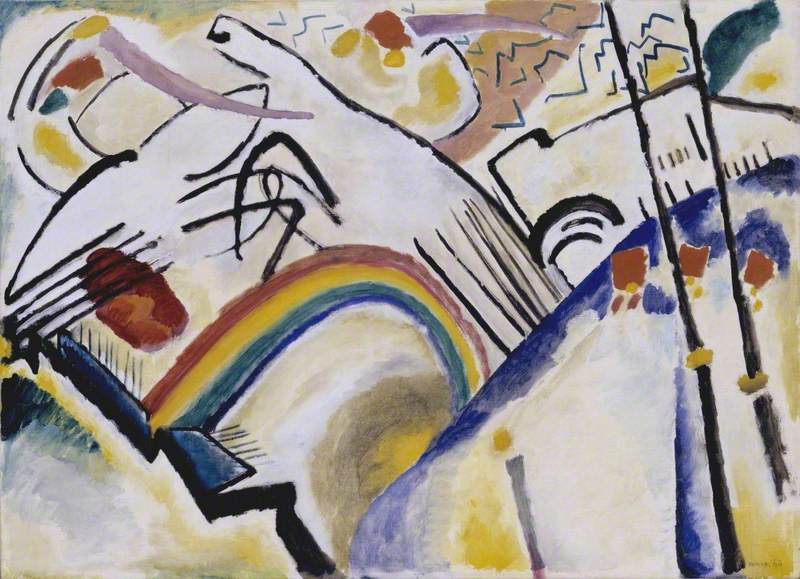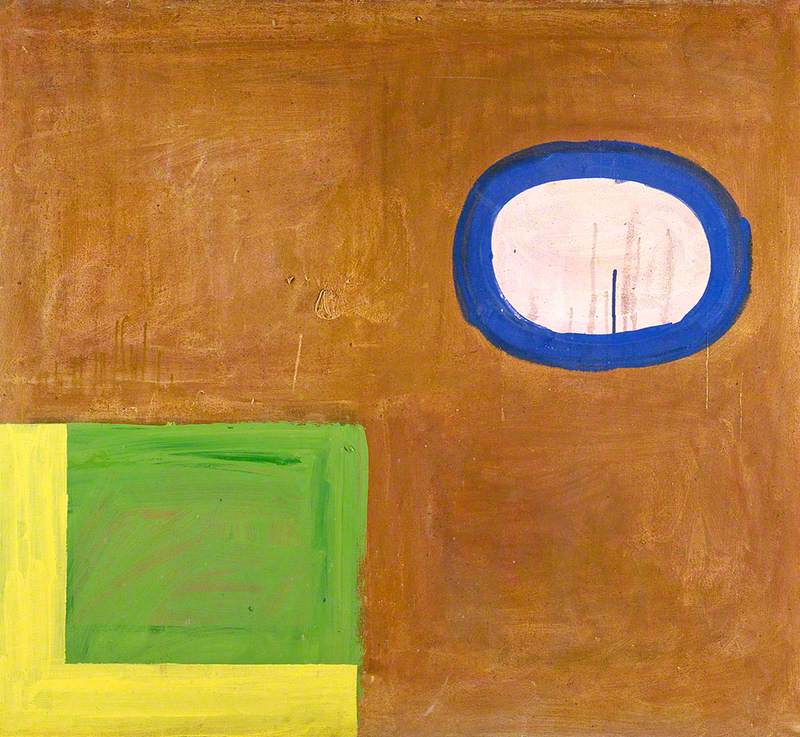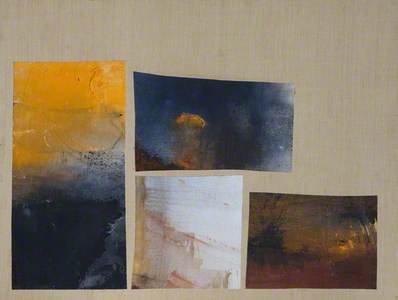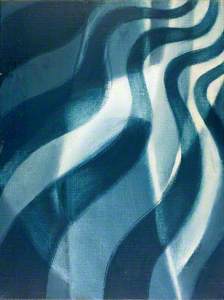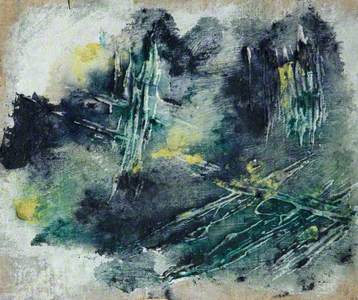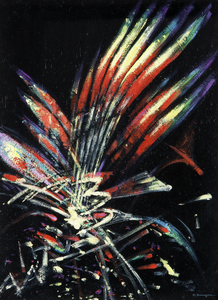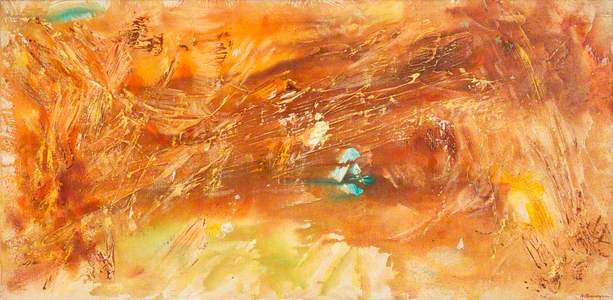'Alice Berger Hammerschlag's art is never static' – Adam Mitchell, Irish Independent, 6th May 1968
Ireland is lucky to have had many women practitioners at the heart of its artistic landscape over the past century. These women have helped advance the contemporary art movement of the country through supporting their fellow artists and producing their own work. Mainie Jellett was hugely influential in her championing of modern art in the new Irish Republic, whilst in the north of Ireland during the 1950s and 1960s women were also central to creating a connection between the public and current art practice, both globally and locally.
Anne Crookshank formed the incredible foundation to the contemporary public art collection in the Ulster Museum, while another key figure, sadly lesser known, was Alice Berger Hammerschlag. A friend of Crookshank, and of painter and sculptor Deborah Brown, Berger Hammerschlag not only painted crucial abstract studies in her own right, but also supported the practice of her fellow-artists and the wider local culture, as well as playing a part in introducing international modern art to Northern Ireland.
Berger Hammerschlag was born into a Jewish family in Vienna in 1917. She displayed an interest in art from a young age, being awarded a diploma in a worldwide children's painting competition held in Switzerland when she was nine. She went on to study at the Vienna Academy of the Arts under Professor Franz Cižek, followed by time at the Vienna School of Arts and Crafts. In 1939 she was one of the few that managed to escape before the war on a rare permit that was awarded by the British government; the graphic design visa got her safely to London and then she settled in Belfast.
Upon moving to Belfast she had a successful career in book design, mostly illustrating and writing children's books for publishers in the United States, Portugal, Italy, Austria, Britain and Ireland. This was accompanied by other graphic design work. She continued to pursue her own painting practice which started to become abstract from 1947.
Berger Hammerschlag's impact on the artistic culture of Belfast went beyond her own paintings. She was a permanent member of staff of the Lyric Players Theatre, painting and designing sets for their Dublin and Belfast productions. The Christmas Day edition of the Belfast Newsletter in 1966 commented on her 'untraditional style' in designing the central crib for the theatre's carol service – 'a sparse pattern of high interlocking triangles of blue and white crossed by cradle shaped painted bars'.
Her worlds combined when she became director of the Lyric's New Gallery on the Grosvenor Road in Belfast. This gallery was central to exposing the audiences of Belfast to modern and abstract art. The public have Berger Hammerschlag to thank for the beautiful piece by Gillian Ayres in the Ulster Museum collection that was purchased from her through the New Gallery.
Berger Hammerschlag was incredibly active and prolific both inside and outside of Northern Ireland. She assisted at the Belfast Arts Festival – organising an exhibition of work by Evie Hone in 1968 – and also was a member of the Women's International Art Club and the Free Painters and Sculptors, as well as a founding member and treasurer of the Ulster Society of Women Artists. She exhibited at the Arts Council Northern Ireland Gallery and Queens University Belfast, held one person shows in London in The New Vision Centre and the Ulster Office, and exhibited in group shows in Dublin, Bristol, Rome, Paris, Cannes, and the United States. Her influence and support to young artists and students in Belfast was active and she was known to host groups regularly in her home studio, which was described in itself as a work of art: full of meticulously cared-for materials and arrangements of her collection of stones, pottery and rare books.
'Mrs Berger Hammerschlag is an artist who manages to combine a highly complicated philosophy which expressed itself in abstract art, with an emotional duality which gives her painting a unique personal flavour.' – Mercy Hunter, Irish Times, 2nd November 1968
The artist's interest in psychology, physics, and philosophy can be found within her work, which evolved through various stages during the middle of the twentieth century. Personal meaning and symbolism – connecting emotion to depictions of natural forces – were maintained throughout. Though her work was abstract, the colour choices were symbolic. Life and energy were represented with reds and earth colours: greens symbolised growth, blues and pinks stood for abstract values and positivity, whilst dull browns and blacks were the negation of life.
Calvary Old and New encapsulates this outlook perfectly. The three cross-like shapes casting a sweep of darkness across the left of the canvas symbolise suffering and despair. White light at the top of the work conveys an idea of regeneration and hope.
A later work, Point of Release No. 2, was displayed in her exhibition at Queens University Belfast in 1968. It repeated the notion of contrasting darkness with hope. Mercy Hunter stated 'it is painted in dull greens and reds, and there is a threatening pincer-like feature in it; out of which escapes a green globular shape. I think the symbolism here is clearly pointed'. Though friends recalled that she did not talk about her experiences before Belfast, or the impact the war had on her family and loved ones, it is possible that these events were communicated through her work.
The notion of rhythms and pattern were consistent in her painting, whether through the titles or the undulating repetitive forms found on the canvas. This both links to her musical interest and to the rhythm and balances found in nature. Towards the end of the 1960s, after grounding her colour experimentation, she became interested in capturing the movement and energy of light, studying in detail how to interpret it through paint and portraying its evolving and revolving beams, as seen in her 'Streams of Light' series. These studies then evolved into looking at the structure of crystals and how light interjects with their form.
Multiple reviewers of her exhibited work equated her painting to images of the earth from space, the late 1960s being a time when public interest and enthusiasm was focussed on this exploration. This demonstrates how Berger Hammerschlag's painting was associated with newness, exploration and excitement. She was at the centre of everything in the Belfast art scene and kept it moving forward.
Though sadly she is not known very widely (this will undoubtedly change through a current doctoral research project), she did leave a tangible legacy through the paintings that are now in public collections, as well as the Alice Berger Hammerschlag award. After her untimely death in 1969, at the age of 52, a group of her friends (led by the painter Derek Hill) established the scholarship for emerging artists in her memory. Their aim was to recognise her passion and energy for nurturing artistic endeavours. The sale proceeds from works donated by her widower Heinz Hammerschlag to a retrospective exhibition, held at the Arts Council's Bedford Street gallery, went towards funding the Trust. The Irish painter Robert Ballagh was the first to receive the award (which is now managed by the Belfast School of Art).
It is a fitting tribute that an artist whose work and personality was full of such energy, vitality and hope continues to generate contemporary artistic practice in Belfast. Alice Berger Hammerschlag's art is truly never static.
Anna Liesching, Curator of Art at Ulster Museum and co-convenor of the Northern Irish Art Network
This article was supported by Arts Council Northern Ireland
